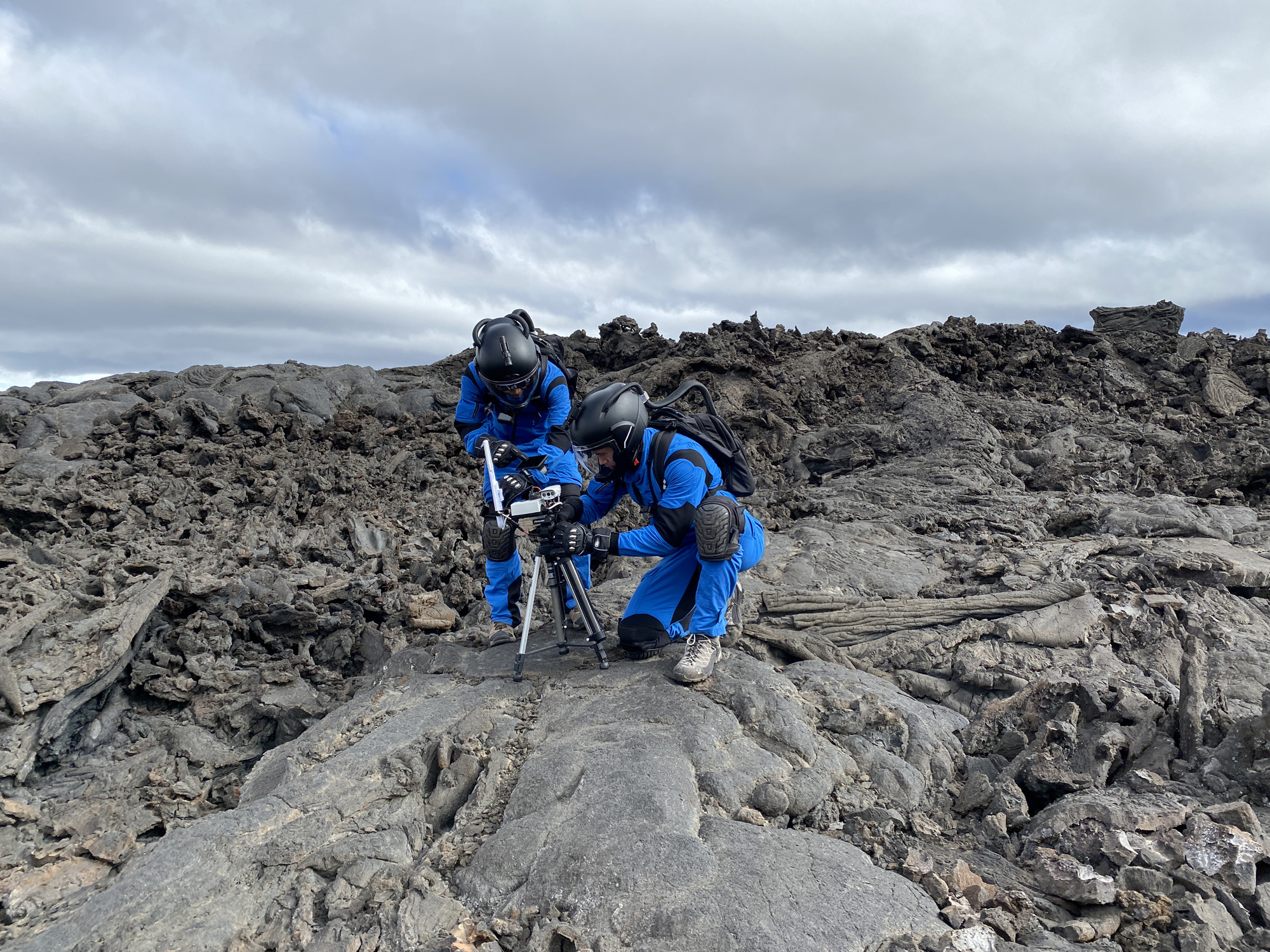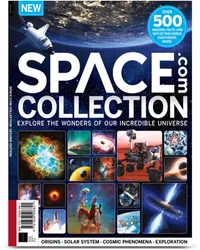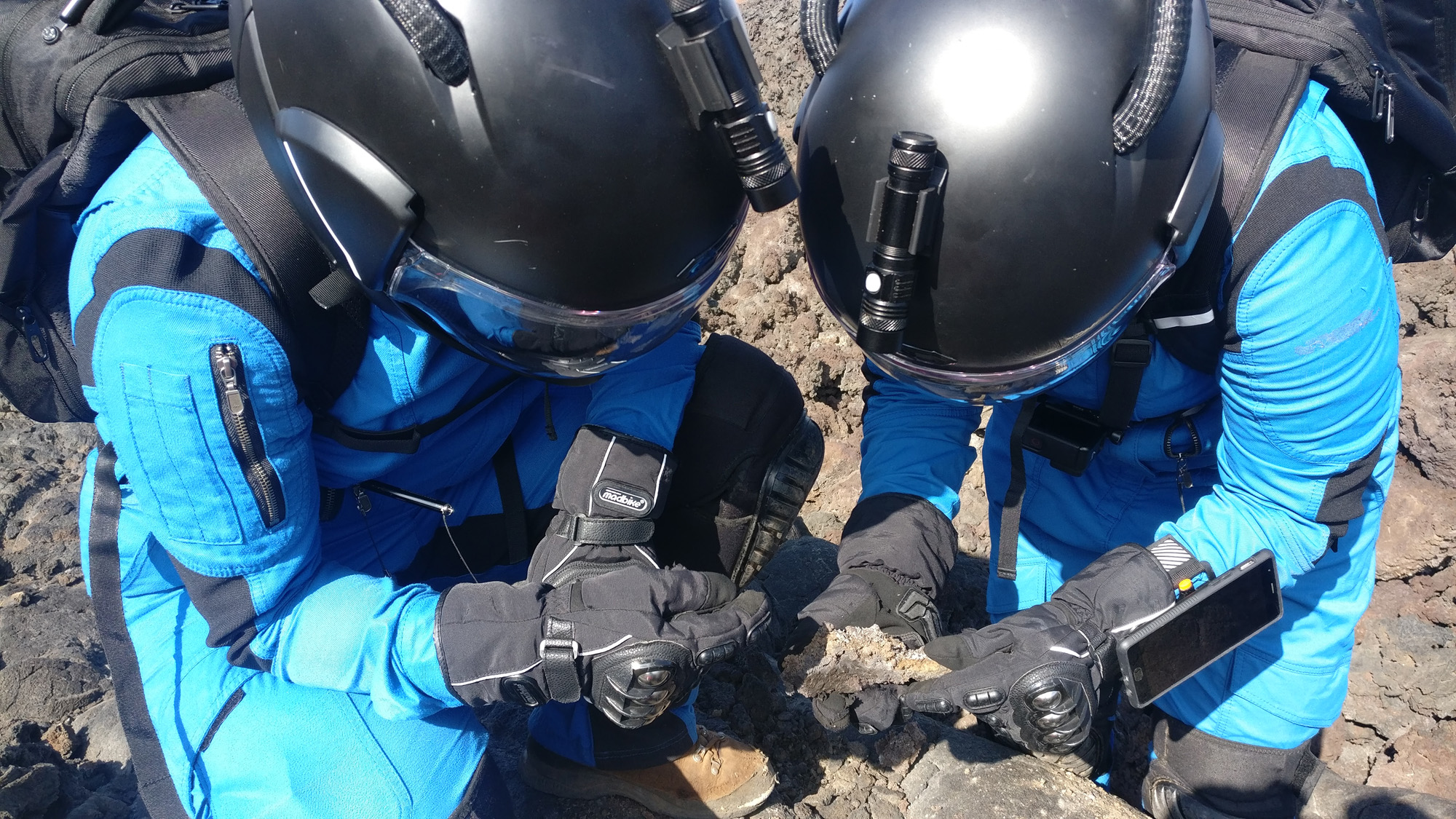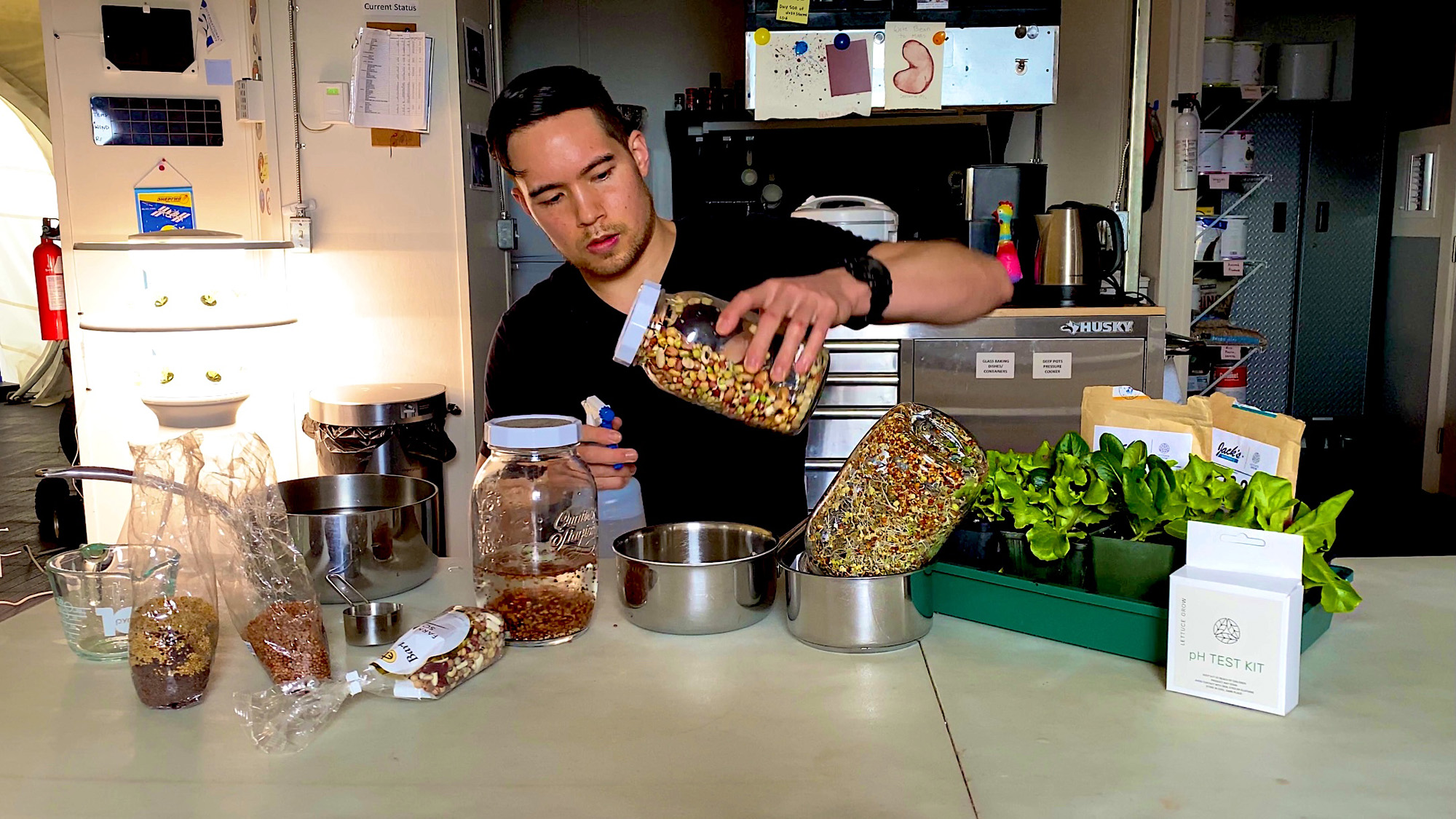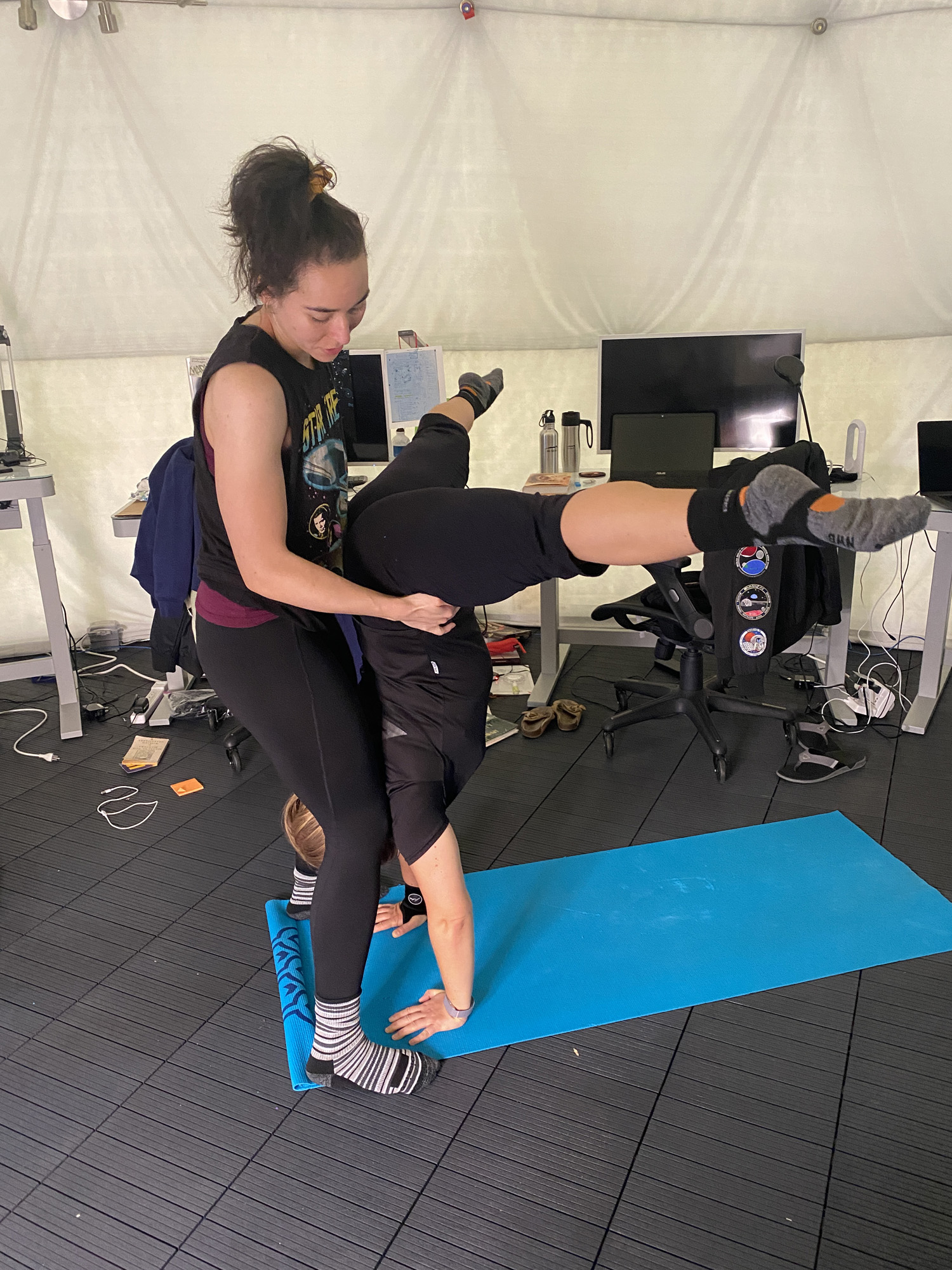When the 'Mars' mission commander breaks new ground — Commander's report: sol 6

Stuck in her old ways, Commander Musilova rediscovers the thrill of space problem solving.
Dr. Michaela Musilova is the director of Hawaii Space Exploration Analog and Simulation (HI-SEAS) program, which conducts analog missions to the moon and Mars for scientific research at a habitat on the volcano Mauna Loa. Currently, she is in command of the two-week Valoria 2 mission and contributed this report to Space.com's Expert Voices: Op-Ed & Insights.
Commander's report for the Valoria 2 Mars mission at HI-SEAS
Sol 6 (Feb. 9, 2021)
Being stuck in my ways — that's not something I thought I would be guilty of anytime soon. I thought I was a pretty adaptable and flexible type of person, but it is starting to dawn on me that leading mission after mission has left a mark on me. The Valoria 2 analog Mars mission at HI-SEAS is around the 27th mission that I have led as a commander. Honestly, at this point, all my previous missions are starting to become a blur. I keep in touch with my ex-crewmembers, but the mission details all merge into one long story. Nevertheless, what I'm now starting to see are patterns in my behavior and my leadership.
During a typical lunar or martian mission at HI-SEAS, I spend the first few days training my new crewmembers. I try to use only an empowerment leadership style, allowing my crewmembers to embrace being analog astronauts without micromanagement. As long as the crew respects several important rules during our mission, I almost never need to enforce any kind of authority on the crew. Instead, we usually get along very well and everyone respects the guidelines that I put in place for every mission.
Related: What didn't kill us on 'Mars' only made us stronger — Commander's report: sol 13
It's not unusual for the crew to make mistakes during the first three days or so of the mission. There is a lot to learn about living and working on the moon or Mars, so I have a lot of patience with them. One of my main rules is for them to ask me as many questions as they need. I would rather they double-check certain matters with me than to do something incorrectly. With every mission, I've developed checklists that I go through when training the crew. Only when they are well versed in working and surviving on the moon or Mars, then I could focus on my research and only check in with them when necessary.
Breaking space news, the latest updates on rocket launches, skywatching events and more!
This seemed to be the best way to do things — until recently. A new realization hit me: changing things up would not only benefit me to escape from my "Groundhog Day" cycle, but also the crew. I'm not a huge fan of repeating activities over and over again, so sticking to a certain routine to help the new crew break into the HI-SEAS habitat has drained a lot of excitement out of me. I try my best to not lose enthusiasm when training the crewmembers, as I love teaching and sharing my otherworldly experiences with others. However, this takes a toll on my energy levels.
Then, something changed that completely opened my eyes to a new world of possibilities. My routine had been broken. We had to suffer through a number of dust storms on Mars (aka rainstorms on the Big Island of Hawaii) during my previous Valoria 1 mission a couple of weeks ago. I could not train the crew in the same way and in the same order of activities as I normally would. Suddenly, I was forced to think out of the box and improvise. Abstract problem solving and improvisation are vital in the space sector, so this was a welcome change for me.
Space.com Collection: $26.99 at Magazines Direct
Get ready to explore the wonders of our incredible universe! The "Space.com Collection" is packed with amazing astronomy, incredible discoveries and the latest missions from space agencies around the world. From distant galaxies to the planets, moons and asteroids of our own solar system, you’ll discover a wealth of facts about the cosmos, and learn about the new technologies, telescopes and rockets in development that will reveal even more of its secrets.
It was like a completely new world of possibilities opened up for me. I changed the way in which I did our-in-the-field geology training during the Valoria 2's first Marswalks, limiting them to the surroundings of the habitat because of bad weather. The previous Valoria 1 crew even hid the famous HI-SEAS "Easter egg" of crew treasures in a different location than it had been hidden in over the past three years. My analog space missions didn't have to be as repetitive as I thought that they were doomed to be. I found a new hope and energy in me to power through the three lunar missions that await me after Valoria 2.
Now, the Valoria 2 crew is setting more precedents. Some of them are not so great, like the fact that they were the first crew to set off our habitat's fire alarm. That was during their attempt at making pancakes at the start of the mission, so no harm was done, but many lessons were learned. The crewmembers then decided to try to become the crew of many firsts, so this trend continued. They have since made the first butter and first very fluffy scrambled eggs on Mars. I am looking forward to what they will come up with next.
Related: Avoiding digestive problems is part of daily activities on the moon for the Sensoria M3 crew
As a crew, we have definitely now become a space family, and every day I spend with them is a joy. Each one of them is progressing quickly with their individual research projects as well. Operations Officer Rilee Kaliher has collected ten samples of volcanic rocks near HI-SEAS, including cinder, pahoehoe and 'a'a, for her in-situ resource utilization research. Similar kinds of rocks are likely to be found in some parts of the moon and Mars. Rilee began characterizing and analyzing the samples in order to determine their potential use as building blocks for the first sustainable human settlements on Mars.
Plant Biology Officer Paul Tomko has successfully sprouted his first batch of organic broccoli, crimson clover and radish sprouts for the crew, while he continues to work on his batch of legume sprouts. Paul is experimenting with various growth and harvesting techniques to maximize produce yield and give a boost of nutrition to the crew, which includes using the LettuceGrow system to grow new lettuce seedlings.
Science Communications Officer Lain Velasco's hand-balancing training program is progressing with great results. The crew has only been working on their program for a few days and they have already started to develop higher body awareness in inverted positions.
They are also reporting a decrease in vertigo, confusion and fearfulness when being upside down. Their feedback is mostly positive and they seem to be feeling motivated to continue their training even post-mission.
Finally, Crew Engineer Chris Jackson has discovered that the crew really enjoys tracking and understanding their activity, sleep and tone using the Amazon Halo fitness tracker. His observations are that the crew try to always wear their individual devices rather than resent them. Chris reports that the crew is willingly sharing updates from the device when the crew congregates.
Commander Musilova signing off feeling both refreshed and motivated. The Valoria 2 crew has brought a breath of fresh air into my life on Mars and I can't wait for what new "firsts" they have yet to bring to HI-SEAS.
Follow Michaela Musilova on Twitter @astro_Michaela. Follow us on Twitter @Spacedotcom and on Facebook.
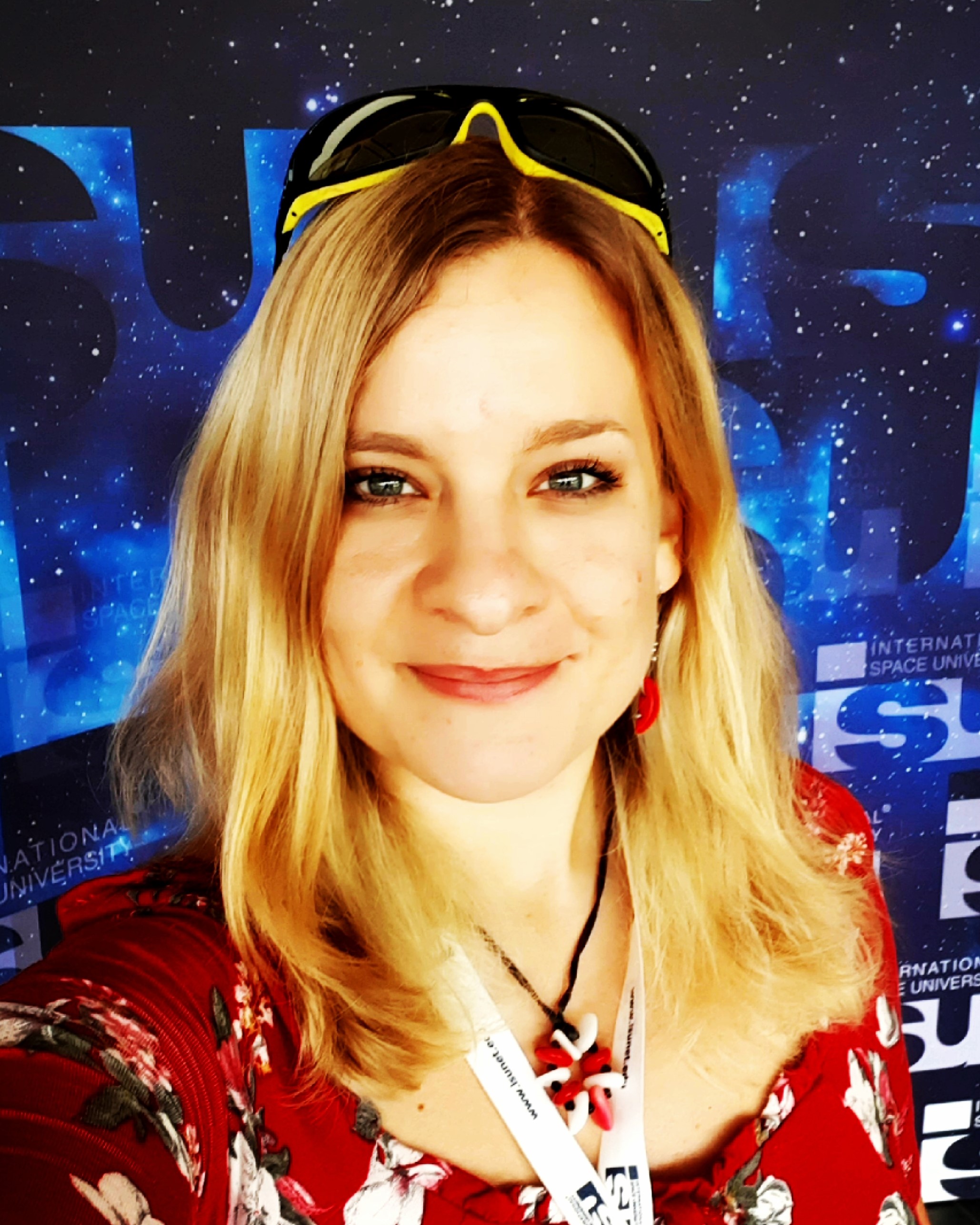
Dr. Michaela Musilova is an astrobiologist with a focus on life in extreme environments. She has a PhD degree from the University of Bristol and is a graduate from the International Space University's (ISU) Space Studies Program. Michaela's space research experience includes working at the NASA Jet Propulsion Laboratory, University of London Observatory, Canada-France-Hawaii Telescope, on NASA's and the U.K. Space Agency's MoonLite project, being an analogue astronaut and Commander of numerous simulated missions to the moon and Mars at the HI-SEAS station in Hawaii, and at the Mars Desert Research Station in Utah. Michaela is currently the Director of HI-SEAS, as part of the International MoonBase Alliance. She is also a visiting Professor at the Slovak University of Technology, Vice-Chair of the Slovak Organisation for Space Activities, Adjunct Faculty at ISU and the Senior Research Adviser for Mission Control Space Services Inc.
She has received numerous prizes and grants, including the Emerging Space Leaders Grant from the International Astronautical Federation (2016) and the Women in Aerospace – Europe Young Professional Award (2016), and she was selected as one of the most promising 30 under 30 by Forbes Slovakia (2015). Michaela is also actively involved in the Duke of Edinburgh's International Award, as a patron of the program in Slovakia and an Emerging Leader Representative for Europe, Mediterranean and Arab states. Furthermore, she enjoys participating in STEAM outreach activities from teaching at schools, giving public presentations, to working with the media and more, as well as encouraging people to pursue their dreams. For instance, she is an Advisory Board Member of the STEM Punks immersive programs for students and teachers.
